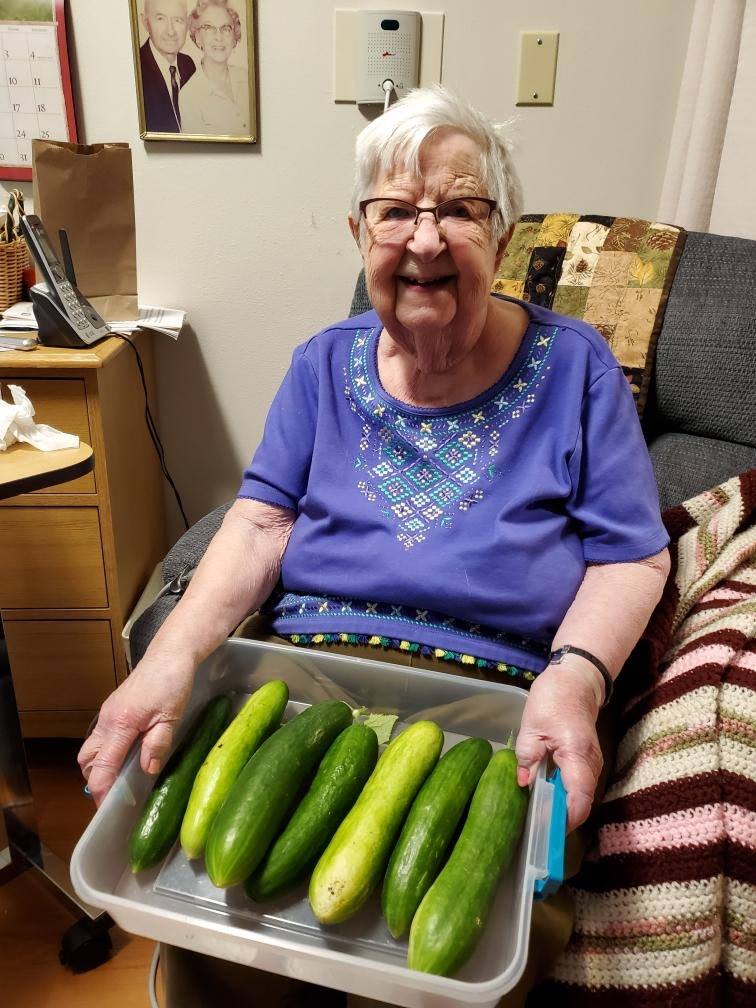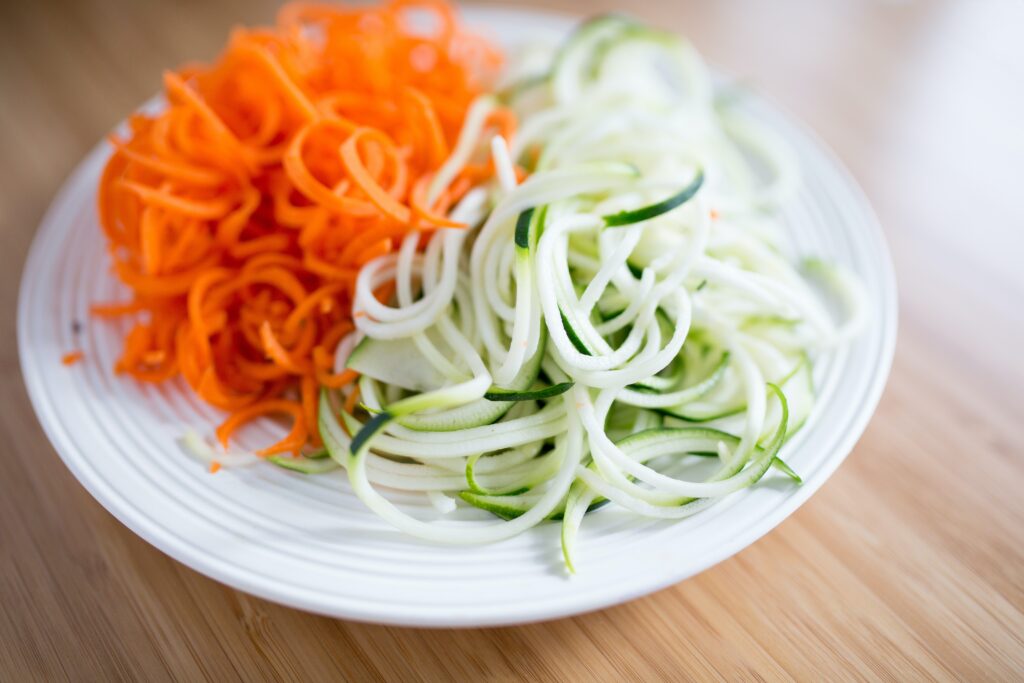How to Sneak More Fruits and Veggies Into Your Diet
Eating fruits and vegetables is important for everyone, but it is particularly good for older adults. This is because older adults have a higher risk of chronic conditions such as diabetes, heart disease, cancer, and other geriatric conditions. Maintaining a healthy diet, including ample fruits and vegetables, can help lower the risk of those conditions.
As people get older their dietary needs change. They typically become less active, their ability to absorb nutrients becomes less efficient, and their metabolism begins to slow down.
The National Council on Aging suggests you familiarize yourself with what a healthy plate looks like.
Here’s a hint:
“Your plate should have 1½ to 2 cups of fruits and 2 to 2½ cups of vegetables.”
You might remember the food pyramid, but the USDA has since released a simpler way to help people see what they should eat each day. It’s called MyPlate. The simple graphic shows exactly how the five food groups should stack up on your plate. These are the building blocks for a healthy diet.
Since fruit and veggies are supposed to make up a sizable portion of your plate at each meal, knowing ways to incorporate more of them in ways you enjoy is essential to meeting your body’s increased nutrient requirements.
Why is it Important to Eat Fruit and Veggies as a Senior?
Healthy eating gives an older adult nutrients to help reduce the risk of a stroke, heart disease, certain cancers, digestive problems, high blood pressure, and many other health conditions. That is why eating healthily as a senior is strongly encouraged.
As we age, eating healthy can make a big difference in our health, our well-being, and how we feel. Eating fruits and veggies every day has its benefits for older adults, which include:
- Help obtain nutrients such as fiber, vitamins, calcium, and other minerals
- Help in maintaining a healthy body weight
- Reduces the risk of health conditions
- Meets individual nutritional needs
- Helps maintain energy levels

10 Tips to Sneak in More Fruits and Vegetables
Finding ways to sneak in fruits and veggies can have a positive effect on cognitive conditions, bone health, eye health, and the immune system.
Although it can be challenging to find ways to achieve the daily fruit and vegetable intake, here are 10 tricks to sneak in fruit and vegetables each day:
- Be Creative
There are fun and delicious recipes that everyone can enjoy, and if you enjoy it enough, you’ll eat it more! Look for recipes that include a primary ingredient that’s a fruit or veggie. This could be homemade applesauce (try this recipe by SimplyRecipes), fruit and veggie smoothies, banana ice cream (try this one by Chocolate Covered Katie), or vegetable puree soup, for example. While plain fruits and veggies can be a bit ho-hum, finding fun and nutritious recipes is a healthy way to sneak in vegetables or fruit throughout the day.
MyPlate says any fruit or 100% fruit juice counts as part of the Fruit Group, so they may be fresh, canned, frozen, dried, whole, cut-up, or pureed. Any vegetable or 100% vegetable juice counts as a member of the Vegetable Group, so they may be raw or cooked; fresh, frozen, canned, or dried/dehydrated; and may be whole, cut-up, or mashed. - Steam Vegetables
Raw vegetables can be difficult to chew or digest. Steaming vegetables can make it easier on chewing and digestion while still getting the nutrients, whereas boiling destroys the nutritional value of vegetables. There are a variety of options available, since any vegetable can be steamed! Get yourself a good steaming basket (like this one by OXO for under $20 on Amazon), and try steaming artichokes or radishes for something different. - Try Veggie Noodles
Veggie noodles are a great way to sneak in veggies. Try pre-packaged pasta with veggies blended right in, or make your own using a spiralizer (think long, skinny noodle shapes) or vegetable peeler (think long, thick ribbons, like lasagna). Veggie noodles not only give you that burst of nutrition, but they’re also an excellent low-carb substitute compared to traditional white pasta, if you’re looking to cut back on carbohydrates. Veggie noodles can be used in any noodle dish, from lasagna to spaghetti with meatballs. This trick is delicious and nutritious.

- Make a Fruit Dessert
Dessert is a delightful way to sneak in the daily fruit goal. Sure, substituting a fruit cup for cake or ice cream is a healthier alternative, but don’t forget moderation, too! If you want that bowl of ice cream, have at it, and try topping it with fresh berries. If you’re feeling in the mood for fruit, swap your usual after-dinner dessert for a slice of watermelon or a handful of frozen grapes. - Have Fruit for Breakfast
Adding fruit to breakfast is a perfect way to start the day and help you maintain energy for the day ahead. Your favorite kind of fruit will pair beautifully with oatmeal, yogurt, cereal, or simply as a side option to your usual breakfast. - Snack on Veggies or Fruit
Throughout the day, we all need a little snack here and there to keep us going. Make sure yours are healthy choices, including at least a fruit or veggie with each snack. Swapping out other unhealthy options with strawberries or carrots will give older adults more benefits in addition to just meeting their daily nutritional goals. They will feel more energized and will experience lower risk for health conditions. - Display Produce
Putting your fresh produce in a prominent spot in the refrigerator or on the counter will remind you to eat it. The bag of carrots in the back of the fridge is all too easily forgotten, so as soon as you bring it home from the store, wash, slice, and store it front and center. Use a clear container so you see it and think to grab it – this way, it’s ready to be consumed as a satisfying snack in a snap. (Try saying that five times fast.) Many times we forget we buy fresh produce or forget what we have, so it ends up as wasted food. Therefore, displaying produce will give you a daily gentle reminder to eat it up.

- Juice
One delicious and efficient way to maximize your fruit and vegetable intake is to juice some produce. With a high-quality juicer, you simply plug it in, drop in whole produce (peels and all!) and a flavorful, nutrient-rich juice fills your cup. Try tasty combinations that include citrus, herbs, fruits, and vegetables all in one. - Grow Your Own
The benefits of gardening are countless for older adults. According to an Australian study from January of 2020, older adults who gardened reported enhanced self-esteem, productive endeavors, social engagement, and exercise. What’s more, if your vegetables are the result of a labor of love (aka your gardening skills), you’ll naturally be more inclined to eat them and enjoy the fruits of your labor. Read more about gardening for older adults here, and learn about a special indoor herb garden we started at Three Pillars in March of 2020. - Try New Things
For every grocery store trip you take or order you place, pick out a new fruit or vegetable. When you’re out to eat, try a new vegetable dish. This trick will prevent boredom with fruit and vegetable options and help older adults maintain a healthy, balanced diet.
Daily eating habits change as we get older, so therefore, making small adjustments can help ensure you enjoy foods and beverages while maintaining a balanced diet. Use the tips and tricks provided to sneak in the daily servings of fruits and vegetables, and you’ve already won half the battle of healthy nutrition!
Have a tip to add? Leave a comment below to let us know.




